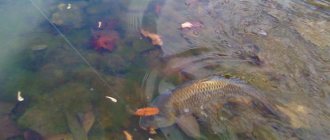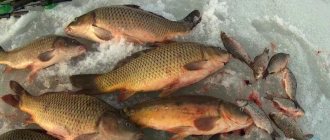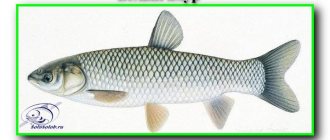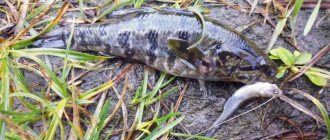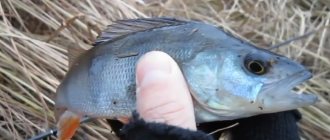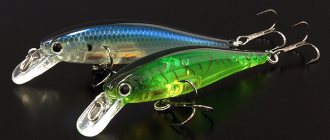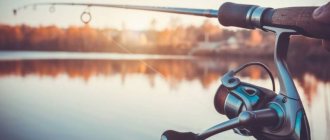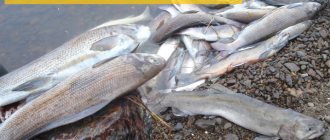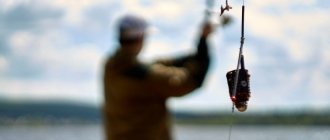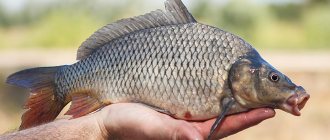Who can you catch for bread?
This simple bait turns out to have many clients in the school of fish. Various inhabitants of our reservoirs are not averse to eating dry crust.
Here's someone who would be happy to eat properly prepared bread for fishing:
- verkhovka (serka, verkhovka);
- roach (rudd);
- bream, white bream, silver bream;
- crucian carp of all types;
- carp, carp
These are the main hunters for this simple fish delicacy. Hunting for each species of these fish is a real art! You need to know the habits of each fish. Be able to properly prepare not only bait from bread, but also an attractive bait from bread for fishing. Know exactly the habits and preferred habitats. In order not to miss the fish, when all the ingredients have already been prepared and everything you need has been prepared, you need to know the characteristics of the bite of each of these species for bread. It is necessary to accurately prepare the tackle for each fish, because this too has its own characteristics. A nimble top-swimming fish will never be tempted by bait mounted on hook No. 5 for crucian carp. And the tackle that catches redfish simply won’t support a decent crucian carp weighing 600 grams.
For the most part, fishermen use bread crumbs. But bread crust, when properly processed, works great. You just need to know how.
Tackle for catching carp on bread
There are different ways to catch carp using bread. Most often it is a fishing rod with a float, a donka or a feeder.
Float tackle uses rigid rods that will withstand heavy loads and will not break when fighting and fishing out a large fish. Suitable forms are 4...6 meters long, equipped with a corresponding (2500...4000) spinning reel. The latter must have a friction brake with good sensitivity.
The fishing line is chosen to be strong and capable of withstanding a tensile strength of 6…10 kg. It is better to have a dull color, for example, dull, greenish. It can be either braided or monofilament.
The float in the equipment can be of different shapes, but it is not bright and is better with a thin tip. The latter are more sensitive and allow you to quickly see a bite.
It is better to take hooks for catching carp those with a short shank. Size No. 8...No. 10 for carp up to medium size, and No. 4...No. 6 for large fish.
The sinker is selected by weight according to the presence of current in the reservoir. You can use sliding ones with a shape, for example, olives. A swivel is installed at the end of the fishing line, and a leash with a diameter slightly smaller than the main fishing line and a length of 50...100 cm is attached to it.
Both the bread crumb and its crust are used as bait. In the first case, it will lie on the bottom, waiting for the carp to approach; in the second - to swim in the water column, tempting nearby fish.
When fishing with float gear, bait must be used. It can be different in composition, but it must contain bread, which is the main bait.
When fishing with donks and a feeder, the equipment can be similar to that described above. The leash can be installed not only behind the sinker, but also in front of it. Instead of a load, feeders are usually used, which immediately deliver the bait mixture to the fishing spot when casting.
The advantages of donks and feeders are the ability to fish at large distances from the shore and to fish a large area of the reservoir. In this option, your presence is invisible to the shy fish and does not in any way affect the result of the hunt.
Tackle for catching carp on bread crust
Carp is an intelligent and cautious fish, so the selection and installation of gear must be approached responsibly and professionally. It is better to buy a specialized carp fishing rod. If there is no money for this, they choose from those available. It should be approximately 5 m in length, have great power and be elastic. The upper knee should not be chosen thin. Such a form will allow, when landing a fish, to resist its jerks and quickly tire the prey, preventing it from going into the reeds or into a snag.
The equipment itself is made like a donkey. Place a sinker at the end of the main line and place two leashes above. The load is taken heavy (100...150 g). Leashes for fishing, for example, in places overgrown with grass, are made long, so that crusts of bread attached to hooks can float on the surface of the water, above the layer of thickets.
The first leash is tied to the fishing line, departing 2...3 m from the sinker. Its length is usually within 1.5...2 m. The second is attached at the same distance from the first leash, and the length is taken less - 1...1.5 m. The main line is set to 0.5 mm in size, the leads are made from 0.25...0.35 mm monofilament.
How to make bait from bread
So, the fisherman had ordinary bread at hand.
Of course, you can just pour it into the water and forget about it. But you can find more useful uses for it. Let's start with the question of how the bait is prepared. The easiest way is to simply crumble stale bread into water. But you can also make a real fishing bait.
To do this you will need the following ingredients:
- Regular bread.
- Sunflower oil.
- Cake.
- Semolina.
- Anise flavor.
This is an ideal kit for preparing good bait. And the listed ingredients are always in the fisherman’s backpack. Well, now even a beginner will have them.
Carefully cut off the peel and soak it in water. Moisten the bread crumb just a little. When the crust softens well and turns into porridge, squeeze and drain the liquid. Add the crumb to the mixture and stir. Pour in a tablespoon of sunflower oil. This must be done in a separate container. For example, in a camping pot. Pre-soak the cake in a bucket. Pour the resulting bread mass from the kettle into a bucket and add a couple of drops of flavoring. To stir thoroughly. To be honest, there are no strict proportions. Approximately equal shares are taken. The bait is kneaded until smooth. At the end, semolina is added to the mixture and everything is mixed again. Then let the bait stand for about an hour until the semolina swells. Form the bait balls and you're done. Can be sent to a pond.
How to catch someone
So, the bait is ready.
Now the fun part begins - fishing for bread. The bread bait is made according to the order listed in the previous chapter. Divided by depth to which the cast will be made:
- The surface is high melting.
- At medium depths there are roaches and bream.
- Along the bottom - crucian carp, bream, carp.
The verkhovka (verkhoplavka, serka) walks along the surface itself. To catch it, a fishing line with a thickness of 0.15-0.20, a small hook of 3-3.5 in size and a light float balanced by a corresponding weight are placed on a fishing rod.
Bait
Pieces are plucked from the slightly moistened bread crumb and rolled into balls the size of a match head. They are put on the hook, slightly covering the sting. Now the question is how to catch it. The hook is released to a depth of 10-15 centimeters. Just pour dry crumbs into the water and start the fun. The serka bites sharply. The peculiarity is that the little fish play a lot with the bait and the float dances on the water like crazy. The main thing here is to catch the moment when it suddenly goes under the water and hook it.
Now more serious prey - white bream, rudd, roach. In this case, catching fish with bread is a little more difficult. These fish stay at “half water,” as fishermen say. This means that you need to set the depth at which the bait will be located approximately halfway between the surface and the bottom. The hook goes 3-4. Medium float. Maybe a pen. Feed with a preparation that you prepared for fishing with your own hands.
Bread bait again
There are slight differences here. The same crumb comes with different flavors. For example, bread with garlic, with anise, with vanilla. No more ingredients. The pellets are made the size of a small pea. A little elongated. These breeds do not bite very quickly. Usually the float moves to the side, slowly sinking. Hook when completely submerged.
Heavyweights on the crust
Well, the most serious bottom specimens.
Crucian carp, carp, bream. They make a special bait from bread. The crumb and crust are moistened and kneaded into plasticine or dough. Cake is added to it, kneading thoroughly, and a couple of drops of anise or barberry. It's good to add a little flour. The ball should be elastic, but it should not instantly crumble in the water. Use bean-sized pellets. These fish need to be caught from the bottom. That is, a hook baited with bread lies freely on the bottom, as does the load of gear. The goose feather float stands with a slight inclination. Line on the base 0.45. On a leash from 0.3 to 0.4. Hook starting from 5.
bait balls are thrown. One per fishing rod.
orybalke.com
Option two
The second way is to use a bread crust. Unlike crumb, the crust is used for fishing from the surface of the water, because has positive buoyancy. And, no less than the crumb, the aroma attracts fish.
The main condition is to choose the right type of bread. After all, carp is far from being to the taste of carp, which is not every grain product. For example, carp loves pita bread most of all. Lures made from lavash stick perfectly to the hook, allowing you to make even long casts.
Lures for carp from lavash
Catching carp with lavash bait is the most preferred method. To make a nozzle, you need to stick a fish hook into a fairly large piece of pita bread, and then flatten it, forming it into a ball or drop.
Under water, the pita bread bait will swell, become soft, and its aroma will attract carp.
In the summer, especially in July, it is with bread bait or lavash that you can catch relatively large carp. Mostly carps up to 3.5 kilos are caught on bread.
Tackle for catching carp on bread
To catch carp with bread, they mainly use:
- a regular telescopic fishing rod with a float;
- bottom tackle;
- feeder rod.
It can withstand maximum loads and you will not have any problems when catching large fish. Please pay attention to the following nuances:
- You can use four, five or six meter rods equipped with a spinning reel with a friction clutch.
- The fishing line is selected with medium diameters, which could withstand from 5 to 12 kg. It is preferable for the main thread to have a cross-section of 0.25-0.4 mm. The color scheme is selected based on the reservoir where the fishing will take place. You can use braided fishing line, as well as monofilament.
- It is better to take a float that is not brightly colored, but the tip should be intensely colored so that it can be easily seen from a great distance.
- Hooks must be selected with a short shank, number 8-10. To catch small carp you can use number 6.
- The sinker is selected based on the mass of the float. It is better to use pellets, but in some cases a sliding sinker will also work.
- At the end of the main line there is a swivel to which the leash is attached.
When fishing with a donke and a feeder, they use basically the same diameter of fishing line as described above. Leashes can be attached above the sinker. Various feeders are mainly used as cargo. You can use sliding food containers like a “spring”.
The main advantage of bottom gear is long-distance casting. In this option, your presence is invisible to the shy fish and does not in any way affect the result of the hunt.
This will allow you to cast long distances and, when catching a large specimen, calmly handle it without letting it go into snags. Long leashes are mostly used. Regulating long leashes depends on which layer of the reservoir you prefer to search for prey.
Dough for carp fishing
One of the good options for catching carp is dough. You can fish with dough not only in summer, but also in early spring and autumn.
Baits are made from wheat flour, without the use of additional additives. You can catch carp using dough even without pre-feeding.
When kneading the dough, you should monitor its consistency; the dough should turn out soft. Then it will stay on the hook better and will not arouse suspicion among the carp. However, when fishing for carp with dough, long casts are excluded, because... the bait will fly off the hook. For this bait, it is possible to fish exclusively with float gear.
If desired, you can add the following flavored components to the finished dough, which the carp cannot resist. These include cake, processed cheese, sunflower or hemp oil. After adding flavorings, mix the dough well again. Again, you need to make sure that it remains soft; the carp will simply ignore hard dough.
Bait Catching carp with bread
Technician
Administrator
Even the most professional fisherman sometimes uses very simple, and sometimes even cheap, baits. One such accessible attachment is the most ordinary bread. Typically, fishermen use the crumb rather than the crust. But there are no restrictions.
A piece of bread can be rolled into a ball and placed on a hook, or secured with a hair mount. This method requires that the bread be close to the hook, and not directly on it. Both the first and second methods require fine work skills. But after a few trainings, everything will go like clockwork. For greater convenience, you can use hooks that have a spiral or spring at their base.
For those who don’t want to spend money in any way, but do everything themselves, there is one way to save. You need to put a simple spring from a ballpoint pen on the hook and secure it there. But since time is money, it’s probably easier to buy a ready-made one. Such a spring will serve as a frame for the bread and it will retain its shape longer. Dry bread crusts or slightly toasted crumb cubes can be used for hair installation. Holes are made in the finished pieces and wire or hair is inserted there. To prevent the wire from cutting the bread, you can first insert small plastic tubes into the holes.
Since bread attracts not only carp, but also other fish, it should be used in places where it is known for sure that carp are found there. Air bubbles on the surface of the water can indicate their location. Or you can go to private rates, where you can do a little fishing for a fee.
There is another way to use bread as bait. The bread crust does not sink, which means this property must be used. Having thrown such bait into a pond, you need to camouflage it with other pieces of bread crust. Thus, even the most careful carp will not be able to distinguish which is a simple piece and which is with a hook. To cast bait over a long distance, you can use a slingshot. But in order to fish with crumb and crust, it is not necessary to have a spinning rod; you can use a simple float rod.
Like all attachments, bread also has a number of disadvantages. For example, due to the fact that it is very soft, it cannot be used for a long time. After an hour or two it blurs. Another disadvantage is that bread contains very few substances that fish need. But this is quite fixable. Make an aromatic ointment or buy an attractant in the store, and the problem is solved.
So, spinning in your hands, bread in your pocket and feel free to bet.
Fishing for bread and bread crumbs
The advantage of bread crumb is that this attachment is generally available, and the balls from it stick very well on the hook. True, it is rarely used in its pure form: fish sometimes treat this bait quite coolly, preferring various cereals, peas, and corn grains. However, the bite on bread can be significantly improved if you use suitable additives.
Adding Unifeed
Adding ordinary fishing food to the bread crumb enhances its attractiveness. The bait itself, however, does not hold well on the hook, becoming looser, so it is better to give the crumb the shape of a drop. For this combination they take crucian carp, carp, ide, chub, large roach, bream, silver bream, dace and other white fish.
Bread crust for bream
But it’s better to catch bream not with crumbs, but with a piece of crusty bread. Before fishing, pieces of bread are fried in a frying pan, and then square pieces are cut out of them so that the crumb is adjacent to the crust. It allows the bait to stay on the hook more firmly, and its decent size (1x1x1 cm) prevents small things from knocking the bait down, although there will certainly be attempts to do so.
Carp and carp can easily be used for bread crust. In this case, an even larger piece (with a side of about 1.5 cm) is hung on a hook than when fishing for bream.
"A cheese sandwich
To catch chub, you can mix bread crumb and grated cheese (Kostroma, cheddar, Edam) in equal proportions. The best method of fishing with such a bait is a running donka.
Bread with garlic for crucian carp
Adding a very small amount of garlic to the bread crumb (literally at your fingertips) will attract crucian carp to your baits. And if you add a “garlic” additive to your bait or bait, then it is quite possible to interest all the crucian carp living in the pond.
For those with a sweet tooth
Mixing crumbs from honey gingerbread or “black” gingerbread into the crumb increases the likelihood of bites from crucian carp, as well as carp and carp. These fish have a “sweet tooth” and are partial to honey. However, try not to abuse its quantity. A bait that is too sweet will scare rather than attract fish.
Store-bought flavors
To enhance the bite, you can mix various flavors into the bread: vanilla, dill, strawberry, banana and others, which are offered to fans by fishing stores. Before use, carefully read the instructions: how much aromatic mixture should be added, what time of year it works, what fish it is intended for.
When using fragrances, remember that they only work well for one day. If you plan to fish for several days, then the bait must be prepared every day.
Vegetable oils
Garlic, hemp, flaxseed, unrefined sunflower, and, of course, anise oils added to bread crumb have been used by fishermen since ancient times. Since then, little has changed: just like in the old days, adding a small amount of these oils to bread provokes fish to bite more actively.
With porridge
An excellent attachment is obtained by mixing bread crumb with millet or oatmeal porridge in a 1:1 ratio. The crumb makes the bait more viscous, and it stays on the hook better. Millet is one of the most attractive baits for carp, crucian carp and bream. A mixture of bread and oatmeal porridge will attract carp to the bait. However, the bream can ignore this bait.
Crust or crumb?
They also catch fish such as chub and ide on bread. Moreover, fishermen often argue about how best to catch these fish: with a crust of bread on top or with crumbs in the water column. In my experience, both methods are effective. Only you need to use them at different times of the year. In spring and autumn it is still better to fish at the bottom, and the bite on top is more likely in the summer.
Bread with potatoes
A bait consisting of equal parts of rye bread and mashed potatoes is practically a win-win when fishing for carp and carp. Especially if you flavor it a little with unrefined sunflower oil.
With animal bait
Bread crumb is used, as well as dough when fishing with “sandwiches”. The dough in combination with maggots, bloodworms or a piece of worm evokes the appetite of the same white fish.
True, you need to make “sandwiches” in different ways. In the “maggot-crumb” combination, the maggot is placed on the hook first, and the tip of the hook is covered with bread.
If you are fishing with the “crumb-bloodworm” or “crumb-worm” combination, first hang bread on the hook, and then cover the tip with animal bait.
Some fishermen, for example, do not bother with baiting two different baits, but simply mix crumpled fish into the bread.
Types of bread baits for carp
One of the simplest and most inexpensive ways to prepare bait is to use regular white bread. You should not simply cut a piece of a certain shape from the product and stick it on, as this is not effective. The fish simply takes the bait. Therefore, let's consider options that are more effective. Fans of carp fishing use several popular methods for making bread baits; let’s look at some types of them as an example.
Crumb
This type of bread bait has been used by fishermen for a long time; it is very simple to make. To prepare you need:
- Remove the soft part from under the crust of the bread.
- Place it in water, preferably collected from the same reservoir.
- Wait a little until the pulp absorbs moisture.
- The mass needs to be squeezed out, this is done by hand. Most of the water needs to be removed. The result will be a plastic substance similar to dough.
- Small balls are formed from the resulting substance and placed on a hook.
As an additional option when preparing such bait, add the following to the water or directly to the bread pulp:
- flavorings;
- cake;
- small cereals;
- pea flour.
Bread crusts
To prepare this type of bait you need:
- Using a knife, cut out small cubes of bread crust with a small amount of pulp from the bread or loaf. Since the crust is very dense, it takes a long time to soften and swell in water.
- Pass the hook through the crust, then hide the tip and body of the device in the pulp.
In this case, carp fishing takes place in the bottom layers of water, since the bread crust is very light before it gets wet and floats up with the hook. The position of this bait in the water can be adjusted by the length of the leash or by moving the sinker. You can also fish from the surface of the reservoir, in places where carp are actively feeding nearby and can be visually detected. Most fishermen prepare the crusts at home and put them in a plastic bag, which they take with them when fishing. Various flavorings are added to the package:
- sunflower oil;
- anise drops;
- and other odorous substances.
This allows you to make the bait more attractive. You can also prepare bread crusts in reserve. They are cut out of bread or loaf, making a hole in them with a knitting needle in advance. Drying is done in the oven or left to dry in the sun. The resulting baits are stored for a long time. While in water, the crusts soak and become softer.
Bread "tablets"
A very catchy, denser bait, which was invented by fishermen in the process of improving the crumb. As a result, the bread “tablet” stays on the hook for a long time and does not get soggy for a long time. When making this type of bait, it is also possible to use flavors that will make it attractive. It is possible to compare this bait with boilies popular among carp anglers. Sometimes “tablets” work more successfully than branded boilies.
Prepare bread tablets as follows:
- Cut the bread or loaf crosswise and cut off two pieces one centimeter thick.
- Cut off the crust of the bread around the perimeter from these pieces.
- Use a rolling pin to compact the bread on both sides.
- On one side they are coated with honey (condensed milk, sunflower oil). You can also crush and add garlic or other fragrant ingredients.
- 2 pieces are combined and passed with a rolling pin again.
- Now the pieces need to be given the required shape. You can simply cut them into small squares, similar to lozenges.
You can put several “tablets” on a hook, or you can attach them to a separate hair, like boilies. Such bait can stay in the water for about an hour without getting wet. Bread “tablets” have proven themselves very well among fishermen.
Tactics when fishing for bread
In conclusion, I’ll tell you about some features when fishing with bread baits.
Only near residential areas
Firstly, it’s worth mentioning right away that in reservoirs that are rarely visited by fishing enthusiasts, fishing for bread is unpromising, and sometimes even simply useless. Fish in these places (oxbow rivers remote from habitation, forest lakes, silted ponds) simply ignore bread baits, clearly preferring bait from their daily diet - bloodworms, worms or insects falling into the water.
The most likely places where carp will bite well on bread are places where this bait is familiar to the fish: ponds, lakes and rivers located or flowing near residential areas.
Suitable places for fishing for bread
The interest of underwater inhabitants in bread can vary even within the same body of water. Basically it all depends on the place where you offer this bait to the fish. For example, an excellent bite on a piece of bread crumb is possible near bridges on rivers or dams, on ponds where, due to circumstances, bread often falls into the water.
They will also peck at bread in the area of bathing areas, in places where they rinse clothes (for example, bridges within populated areas), and on river currents near banks with a clean bottom.
Where is it better not to fish for bread?
But in silted bays or rivers with a weak current and a coastal strip heavily overgrown with algae, bites for bread are rare. Bites on bread baits are also bad in fast currents: here the fish simply does not have time to eat the piece of bread offered to it.

